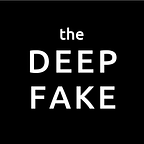The Meaning of (Artificial) Life, with Paul Warren
Episode #03: Shownotes
Data scientist Paul Warren joins us this episode on the Deepfake to share his many epiphanies on whether AI can be Turing Complete, how algorithmic feedback can change our relationship to art, what makes information meaningful, and when he’s experienced the sublime with artificial intelligence and exponential growth.
Paul Warren: “The ‘aha,’ the awe moments were more around the generative models. And for me that was seeing energy based systems and relationships to statistical dynamics… You see it in this one field. My goodness, this formula is also used in this other context. This formula is the same as that formula is the same as this formula. It’s all one thing! There is structure in the universe!”
About Paul
We are excited for the chance to speak with Stanford-trained data scientist and machine learning consultant Paul Warren, whose work spans more than 40 AI projects with YCombinator startups, NASA, the Chilean Ministry of Agriculture, and many other firms. His knowledge and understanding include the technical aspects of AI and quantum computing, as well as aesthetics and social theory that inform human relationships with the information systems in which we live.
[0:00–2:04] Intro: The Meaning of (Artificial) Life
“There are a… lot of boring things that we just don’t want us to do or for any human to have to do. And we want scale, we want tech, we want impact, we want a post-scarcity economy… We want to have robots and AI magically take care of life for us.”
The purpose of AI is to automate tasks in human life, thereby making human activities more efficient. We can also think about applications of AI like those initially conceived in science fiction writings, like creating artificial life, traveling through space, and running intergalactic empires.
[2:05–7:14] Art That’s Turing Complete
In theory, biological and mechanical computers one day can be equivalent.
- Turing Completeness: a system that, given a problem, can solve that problem is Turing Complete
When that equivalence is achieved, what kind of art will AI create? In the short term:
- Museum exhibitions curated by AI
- Poetry written by AI, like PLaiTH
A Turing Complete AI can elicit in humans the same sensory and emotional responses as humans can elicit.
[7:15–9:26] Attentive Feedback
What’s really going on in people’s minds?
- NeuraLink as a window into brain activity
- Moving beyond the Likert Scale
The attention economy:
- Facebook and algorithmic personalization of the news feed
- Will the Louvre algorithmically curate hyper-personalized galleries?
“When the attention mechanisms that we’ve really polished and gotten working on the internet, when we can much more easily translate that into reality, that’s when things really start to accelerate.”
[9:27–14:10] Art as Meaningful Information
There exist two sides to the experience of media and art: the artist and the consumer.
“The sheer amount of content in ever increasing.”
Technology enables each individual human to create more, in terms of quantity and quality, augmenting the scale of production and meaning.
“Art is really just another type of content. Content is really just another type of information. Information, language, the unit is bits. The one rough proxy for how much art is there, is how many bits of information has humanity generated?”
Artists are creating art and media at an exponential rate. So then the issue, for the artist, becomes cultivating an audience for this sheer amount of content. Content is always competing for people’s attention.
[14:11–17:40] Defining Art
Art can also be understood as media for sensory and emotional reaction, and it can convey perceptions of natural life that draw us closer to feelings of the sublime, especially those feelings deepening our respect for life itself:
- Wildlife photography
- Fractals in nature
- Photographs of human life in slums
[17:41-21:26] The Sublime of Exponential Growth
AI and machine learning algorithms have a steep learning curve, especially in early developmental stages. But when the algorithms mature and their performance knocks out benchmarks as fast as engineers can put them together, the pace of development can be exhilarating.
“The ‘aha,’ the awe moments were more around the generative models. And for me that was seeing energy based systems and relationships to statistical dynamics… You see it in this one field. My goodness, this formula is also used in this other context. This formula is the same as that formula is the same as this formula. It’s all one thing! There is structure in the universe!”
Thanks for tuning in!
You can find us on Twitter @AudioDeepfake, and you can listen to more episodes on our website: www.deepfakepodcast.ml
